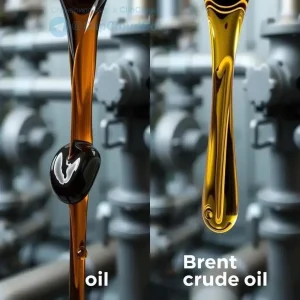Understanding the Marketing Funnel: A Comprehensive Guide
Stop losing leads! Learn the secrets of a killer marketing funnel, attract the right customers, and boost your sales. Get ready to convert!

Understanding how a marketing funnel works is crucial for any business aiming to attract, engage, and convert leads into loyal customers. It’s a visual representation of the customer journey, breaking down the process from initial awareness to the final purchase. Mastering the stages of a marketing funnel allows you to tailor your marketing efforts, optimize your campaigns, and ultimately, increase your sales. This comprehensive guide will delve into the intricacies of the marketing funnel, exploring each stage, and providing actionable strategies to maximize its effectiveness.
The Stages of the Marketing Funnel
The marketing funnel, also known as the sales funnel, typically consists of several key stages, each representing a different level of customer engagement:
- Awareness: This is the top of the funnel (TOFU). Potential customers become aware of your brand or product through marketing efforts like advertising, social media, or content marketing.
- Interest: Prospects show interest by researching your products or services, reading your blog, or following you on social media.
- Consideration: Leads evaluate your offerings against competitors, looking for the best solution to their needs.
- Decision: Potential customers are ready to make a purchase and are deciding whether to choose your product or service.
- Action: The customer makes a purchase. This is the bottom of the funnel (BOFU).
- Retention: The goal is to keep the customer coming back to purchase again
- Advocacy: When customers love you, they go out and advocate for you
Optimizing Each Stage
Each stage of the funnel requires a tailored approach. For example, in the Awareness stage, focus on broad reach and informative content. In the Consideration stage, provide detailed product information, case studies, and comparison charts. The decision stage is where you focus on special offers and incentives to encourage a purchase. And finally, the action stage is where you make it as easy as possible to purchase, and then provide excellent customer service to increase retention and advocacy.
Beyond the Traditional Funnel: The Flywheel
While the marketing funnel is a valuable framework, some argue that it’s a linear model that doesn’t adequately represent the cyclical nature of customer relationships. That’s where the flywheel comes in. The flywheel emphasizes customer satisfaction as a key driver of growth. Happy customers fuel referrals and repeat purchases, creating a self-sustaining cycle.
The Flywheel also has three stages. They are attract, engage and delight. With this model, customers are placed in the center of the business, and all departments work to help the customer.
Strategies for a Successful Marketing Funnel
Effective implementation of a marketing funnel requires a strategic approach. Here are some key considerations:
- Define your target audience: Understand their needs, pain points, and online behavior.
- Create compelling content: Develop content that resonates with your audience at each stage of the funnel.
- Use data analytics: Track your funnel metrics to identify areas for improvement.
- Automate your marketing: Implement marketing automation tools to streamline your processes and nurture leads.
FAQ about Marketing Funnels
What is the primary goal of a marketing funnel?
The primary goal is to guide potential customers through a series of stages, from initial awareness to making a purchase, and ultimately becoming loyal customers.
How can I measure the effectiveness of my marketing funnel?
Track key metrics such as conversion rates at each stage, lead generation costs, and customer lifetime value.
Is the marketing funnel still relevant in today’s digital landscape?
Yes, the underlying principles of the marketing funnel remain relevant, although the specific tactics and channels may evolve.
Understanding how a marketing funnel works is crucial for any business aiming to attract, engage, and convert leads into loyal customers. It’s a visual representation of the customer journey, breaking down the process from initial awareness to the final purchase. Mastering the stages of a marketing funnel allows you to tailor your marketing efforts, optimize your campaigns, and ultimately, increase your sales. This comprehensive guide will delve into the intricacies of the marketing funnel, exploring each stage, and providing actionable strategies to maximize its effectiveness;
The marketing funnel, also known as the sales funnel, typically consists of several key stages, each representing a different level of customer engagement:
- Awareness: This is the top of the funnel (TOFU). Potential customers become aware of your brand or product through marketing efforts like advertising, social media, or content marketing.
- Interest: Prospects show interest by researching your products or services, reading your blog, or following you on social media.
- Consideration: Leads evaluate your offerings against competitors, looking for the best solution to their needs.
- Decision: Potential customers are ready to make a purchase and are deciding whether to choose your product or service.
- Action: The customer makes a purchase. This is the bottom of the funnel (BOFU).
- Retention: The goal is to keep the customer coming back to purchase again
- Advocacy: When customers love you, they go out and advocate for you
Each stage of the funnel requires a tailored approach; For example, in the Awareness stage, focus on broad reach and informative content. In the Consideration stage, provide detailed product information, case studies, and comparison charts. The decision stage is where you focus on special offers and incentives to encourage a purchase. And finally, the action stage is where you make it as easy as possible to purchase, and then provide excellent customer service to increase retention and advocacy.
While the marketing funnel is a valuable framework, some argue that it’s a linear model that doesn’t adequately represent the cyclical nature of customer relationships. That’s where the flywheel comes in. The flywheel emphasizes customer satisfaction as a key driver of growth. Happy customers fuel referrals and repeat purchases, creating a self-sustaining cycle.
The Flywheel also has three stages. They are attract, engage and delight. With this model, customers are placed in the center of the business, and all departments work to help the customer.
Effective implementation of a marketing funnel requires a strategic approach. Here are some key considerations:
- Define your target audience: Understand their needs, pain points, and online behavior.
- Create compelling content: Develop content that resonates with your audience at each stage of the funnel.
- Use data analytics: Track your funnel metrics to identify areas for improvement.
- Automate your marketing: Implement marketing automation tools to streamline your processes and nurture leads.
The primary goal is to guide potential customers through a series of stages, from initial awareness to making a purchase, and ultimately becoming loyal customers.
Track key metrics such as conversion rates at each stage, lead generation costs, and customer lifetime value.
Yes, the underlying principles of the marketing funnel remain relevant, although the specific tactics and channels may evolve.
My Personal Journey with Marketing Funnels
Honestly, when I first started working with marketing funnels, I was overwhelmed. I remember staring at diagrams and feeling like I was trying to decipher a foreign language. I’d spend hours crafting content, but I wasn’t seeing the results I hoped for. I realized I was missing a crucial piece: understanding my specific audience and tailoring my content to their journey.
One of the biggest mistakes I made early on was treating all leads the same. I sent the same generic email to everyone who signed up for my newsletter, regardless of where they were in their journey. The response rate was dismal. Then, I read about lead segmentation and decided to give it a try. I used a CRM to track user behavior on my website. With this segmentation I could see that many of my leads did not know me, or my brand at all. What followed was an email campaign focused on introducing myself and explaining what my company was all about. The results were shocking. My open rates skyrocketed, and I started seeing a significant increase in engagement. I learned that personalization is key.
A Real-World Example: From Awareness to Advocacy
Let me give you a concrete example. I was working with a small, local bakery called “Sweet Surrender” owned by a woman named Clara. Clara was struggling to attract new customers. We decided to implement a simple marketing funnel. First, we focused on awareness through targeted Facebook ads showcasing Clara’s delicious pastries and beautiful cakes. These ads directed people to a blog post on her website about the history of sourdough bread. Then, for those who visited the blog (indicating interest), we offered a discount coupon for their first purchase. This coupon incentivized them to visit the bakery (decision/action). Finally, after their purchase, we sent a follow-up email asking for feedback and offering a small reward for leaving a review. This encouraged retention and advocacy.
The results were fantastic. Clara saw a 30% increase in new customers within the first month. More importantly, she started building a loyal customer base who regularly left positive reviews and recommended Sweet Surrender to their friends. It was a clear demonstration of how a well-designed marketing funnel, tailored to a specific business, can deliver tangible results.
Lessons Learned and Tips for Success
Through my experiences, I’ve learned that the key to a successful marketing funnel isn’t just about implementing the right tools or following a specific template. It’s about understanding your audience, continuously testing and optimizing your strategies, and providing genuine value at every stage of the journey. Here are a few tips that I found invaluable:
- Always be testing: A/B test everything, from email subject lines to call-to-action buttons.
- Focus on value: Offer valuable content and resources that address your audience’s needs.
- Be patient: Building a successful marketing funnel takes time and effort. Don’t get discouraged if you don’t see results immediately.
- Listen to your customers: Pay attention to their feedback and use it to improve your funnel.
I still believe that understanding the marketing funnel is critical. By focusing on my prospects and customers, and consistently testing my assumptions, I’ve been able to find success. It’s not an overnight solution, but with perseverance and a willingness to adapt, anyone can master the art of the marketing funnel.
Advanced Tactics and Overcoming Challenges
As I delved deeper into marketing funnels, I realized that the basic framework was just the beginning. To truly excel, I needed to explore advanced tactics and learn how to overcome common challenges. For example, I struggled with lead nurturing. I was capturing leads, but many of them weren’t converting into customers. I realized I was overwhelming them with too much information too soon. So, I implemented a drip campaign that slowly introduced them to my products and services, providing valuable content at each stage. I also made sure to segment my audience by interest and behavior, so I could send them more targeted messages.
Leveraging Marketing Automation
One of the biggest game-changers for me was embracing marketing automation. I initially resisted it, thinking it was too impersonal. However, I quickly realized that automation allowed me to provide a more personalized experience at scale. I started using marketing automation tools to trigger emails based on specific user actions, such as visiting a particular page on my website or downloading a specific resource. For example, if someone downloaded my ebook on “The Ultimate Guide to Content Marketing,” I would automatically send them a series of emails with additional tips and resources on content marketing.
One specific success story that comes to mind involved a client, a software company named “Tech Solutions Inc.” They were struggling with high churn rates. After diving into their data, I discovered that many customers were abandoning their software after the free trial period. So, I created an automated onboarding sequence that guided new users through the key features of the software and provided them with helpful tips and tutorials. The results were remarkable. Tech Solutions Inc. saw a 25% reduction in churn within the first three months.
Measuring and Optimizing for Maximum Impact
Measuring and optimizing is the key to success. I used Google Analytics to track user behavior on my website, including page views, bounce rates, and conversion rates. I also used marketing automation platforms to track email open rates, click-through rates, and conversion rates. I then used this data to identify areas for improvement. For example, I noticed that a particular landing page had a high bounce rate. After analyzing the page, I realized that the headline was unclear and the call-to-action was weak. I rewrote the headline and added a more compelling call-to-action, and the bounce rate dropped significantly.
The Future of Marketing Funnels and Beyond
The marketing landscape is constantly evolving, and marketing funnels are no exception. I believe that the future of marketing funnels will be even more personalized and data-driven. As AI and machine learning become more sophisticated, we’ll be able to create even more targeted and effective marketing campaigns. However, I also believe that the human element will remain crucial. Technology is a tool, but it’s up to us to use it wisely and ethically.
The marketing funnel will continue to be a valuable framework for understanding the customer journey. My experience has made me a believer in the power of creating thoughtful and well-optimized marketing funnels. I am excited to see what the future holds, and I’m committed to staying ahead of the curve and continuing to deliver exceptional results for my clients.
FAQ: Your Marketing Funnel Questions Answered
-
Q: How long should a marketing funnel take to convert a lead?
A: It varies drastically! It depends on the product complexity, price point, and target audience. A low-cost impulse buy might have a funnel that completes in minutes, while a high-value enterprise software sale could take months. In my experience, mapping out the average sales cycle for similar products in your industry is a good starting point for benchmarking. - Q: What’s the biggest mistake people make with marketing funnels?
A: Ignoring the customer experience after the purchase. The funnel shouldn’t end with the sale. Focusing on retention, advocacy, and turning customers into loyal fans is crucial for long-term success. - Q: How do I know if my marketing funnel is working?
A: Track your metrics! Conversion rates at each stage are critical, as is customer lifetime value. Also, monitor your customer satisfaction scores (like Net Promoter Score) and pay attention to customer feedback. I often use A/B testing to compare different funnel variations and see what performs best.




